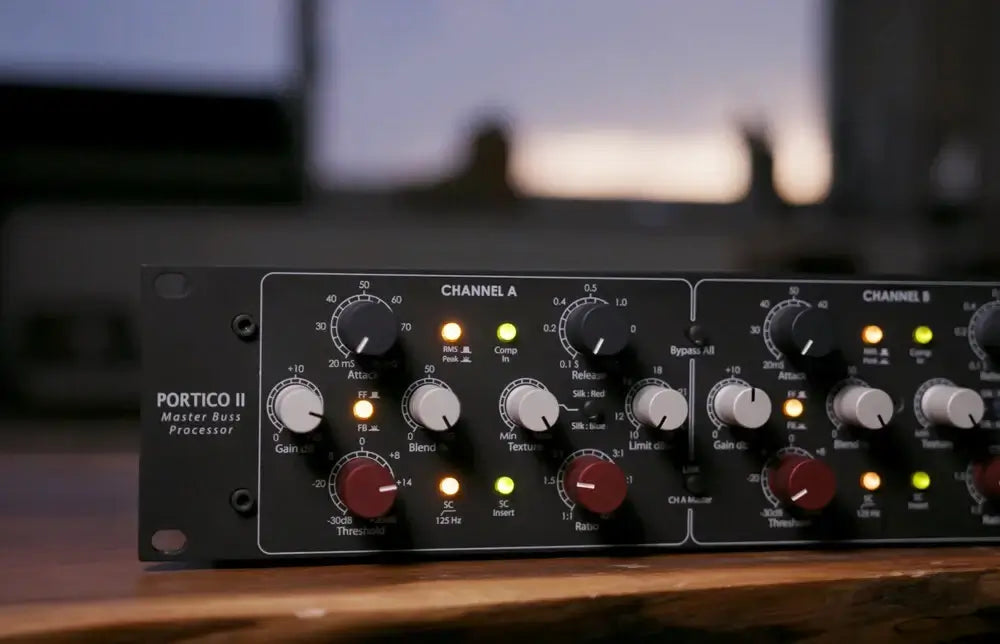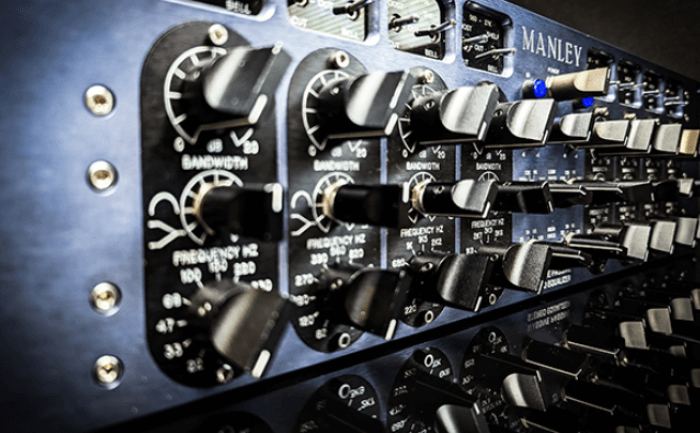Comprehensive Review of Rupert Neve Designs Portico II Master Buss Processor

In the pursuit of pristine sound quality and impactful music production, high-end analog gear holds a unique and irreplaceable position. As an owner and operator of a professional music post-production studio, Develop Device, I am always on the lookout for tools that allow me to push the limits of sound precision, and Rupert Neve Designs’ Portico II Master Buss Processor (MBP) is one piece of gear that has earned a permanent place in my mastering chain. This review dives deep into the Portico II MBP’s features, functions, and sonic characteristics, showing why it’s indispensable for any serious music engineer or mastering specialist. For those interested in having their music shaped with the same level of high-quality hardware processing, feel free to check out my mastering services here: Develop Device Mixing & Mastering.
Overview of the Portico II Master Buss Processor
Rupert Neve Designs has long been synonymous with superior analog equipment, and the Portico II MBP exemplifies the brand’s commitment to excellence. Built specifically to bring out the best in the mix or mastering stage, this analog processor is highly regarded for its versatility, rich tonal character, and uncompromised sound quality. Designed with a hybrid approach, it integrates several powerful modules, including a compressor, limiter, stereo field manipulator, and Neve’s famed Silk texture circuits, into a compact, 2U rack unit.
The Portico II MBP has gained a reputation as a “Swiss Army knife” in mastering. The key to this versatility lies in its unique modular design, which allows each section to be activated independently or in conjunction with others, making it an adaptable choice for various mixing and mastering needs. Its controls provide detailed adjustment capabilities, letting engineers shape everything from transient response to harmonic content and stereo width.
Key Features and Modules
The Portico II MBP’s functionality is divided into four major sections:
-
Compressor Section: A flexible VCA-based compressor provides options for smooth, transparent dynamic control or more aggressive shaping. With switchable feedback and feedforward modes, the compressor is capable of adding subtle cohesion or dramatic punch. Attack and release times are variable, allowing the user to tune the response precisely, and the “Blend” control enables easy parallel compression without the need for external routing.
-
Limiter Section: Acting as a second stage of dynamic control, the limiter is an effective tool for catching peaks and ensuring a solid output level. The combination of the compressor and limiter can provide a controlled yet open sound, helping to bring out the best of any mix without excessive coloration.
-
Stereo Field Editor: The Stereo Field Editor offers MS (mid/side) processing, which can be invaluable for balancing elements in a mix or enhancing spatial width. The ability to adjust the stereo width independently for different frequency ranges allows for a nuanced approach to stereo imaging, which is critical in modern mastering.
-
Silk Red & Blue Modes: The Silk circuit is a signature of Rupert Neve Designs, injecting harmonic richness and analog warmth into the signal. With two modes, “Silk Red” for enhanced harmonic content and “Silk Blue” for a deeper, smoother texture, it provides an easy way to bring out warmth and character while retaining detail and clarity.
Using the Portico II MBP in the Mastering Process
For my work in mastering, the Portico II MBP serves as both a powerful shaping tool and a means to bring depth and clarity to my clients’ projects. When mastering, having the ability to delicately adjust the compression and use MS processing without affecting the tonal balance is key, and the MBP handles this with precision. Whether I’m working with heavy metal, electronic music, or ambient soundscapes, the unit’s versatility shines.
The compressor’s feedback mode has a particularly musical quality, bringing smooth, cohesive control that works perfectly for dynamic tracks. For more aggressive or transient-rich genres, feedforward mode gives me the precision needed for tightening up dynamics without dulling the impact of the mix.
The Silk modes are invaluable when clients seek a specific tonal quality. The Red mode adds a desirable bite to high-end frequencies, ideal for brightening guitars and vocals, while the Blue mode brings out a fuller low-end, perfect for adding weight to drums and bass elements.
Sonic Quality and Impact
The Portico II MBP’s sound quality is what truly sets it apart from other bus processors. The entire design is built around Neve’s legacy of delivering the warm, rich tonal quality that analog lovers crave. In particular, the Silk modes provide a level of analog warmth that feels alive, making the entire stereo field sound more engaging and detailed. When pushing Silk Red, for instance, I notice an increase in high-frequency richness that can transform duller mixes into something much more vibrant.
The compressor’s behavior is also notable. The feedforward mode captures fast transients without over-compressing, making it suitable for genres with sharp, pronounced attacks. Feedback mode, on the other hand, is smoother and slightly more forgiving, which can be a big advantage when working on dynamic or complex material.
User Experience and Workflow
Using the Portico II MBP is a tactile experience that rewards attention to detail. The knobs offer substantial resistance, which gives precise control and minimizes unintentional adjustments. Each section can be bypassed independently, making A/B comparisons straightforward. Additionally, the built-in meters are responsive, and their analog style provides a classic feel that many engineers appreciate.
In terms of workflow, this processor’s design makes it easy to adjust individual elements without interrupting the overall balance. For example, dialing in the stereo width for just the high frequencies allows me to enhance the clarity of high-end elements without muddying the low-end. The option for parallel compression right within the unit is also a significant convenience, giving more control over dynamics without requiring an external mixer.
Portico II MBP Compared to Other Analog Processors
While there are numerous bus processors available, very few offer the combination of features, quality, and flexibility found in the Portico II MBP. For instance, some high-end compressors focus solely on compression, leaving out stereo field manipulation or harmonic enhancement. Similarly, units that do offer MS processing or harmonic adjustments are often limited in other respects, like control flexibility or sonic transparency.
The Portico II MBP stands out by integrating each of these tools while maintaining high fidelity. Its ability to switch between feedback and feedforward compression gives it a broader range than most compressors, and the unique Silk circuits add tonal flexibility rarely found in other units. For mastering engineers who frequently need to adapt their setup to different genres, this flexibility can be game-changing.
Durability and Build Quality
True to Rupert Neve Designs’ reputation, the Portico II MBP is built with durability in mind. Its construction feels solid, with high-quality components and a rugged chassis that withstands regular use. Even after extensive use, the knobs and switches retain their tactile quality, which is essential for professional environments.
Given the Portico II MBP’s premium build and quality, I feel confident recommending it to other engineers looking for a long-term investment in their mastering or mixing chain. This unit isn’t just a piece of gear; it’s a partner in the creative process, built to deliver consistent, professional results for years to come.
Conclusion
The Rupert Neve Designs Portico II Master Buss Processor is an exceptional choice for anyone serious about achieving high-quality sound. Its wide array of tools, including precise compression, MS processing, stereo field adjustment, and unique Silk modes, allow for endless possibilities in sound shaping. From subtle dynamic control to lush harmonic enhancement, the MBP enhances mixes with a rich, analog warmth that only Rupert Neve can deliver.
In my studio, the Portico II MBP has become a critical part of my mastering setup, helping me achieve the tonal balance, depth, and polish my clients expect. Its versatility, robust build quality, and impeccable sound make it a valuable asset in professional music production. If you’re interested in hearing the difference this level of hardware can make in your own music, consider checking out the mixing and mastering services I offer at Develop Device Mixing & Mastering.
For anyone ready to elevate their mixing or mastering process with analog warmth, precision, and character, the Rupert Neve Designs Portico II Master Buss Processor is a top-tier choice well worth the investment.










Leave a comment
All comments are moderated before being published.